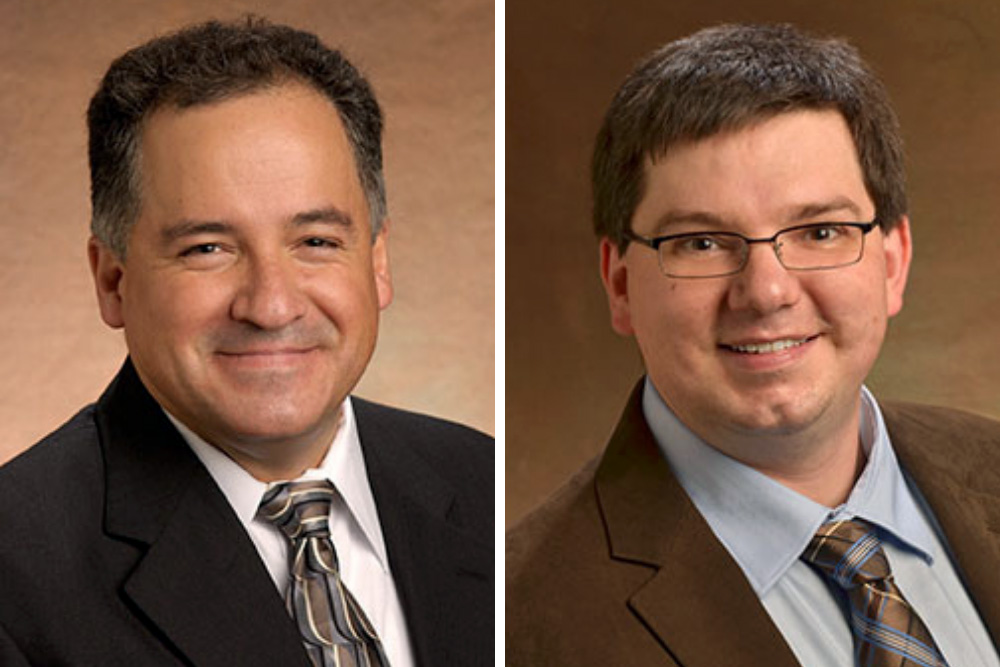
From left to right: Ivan Maldonado and Ondrej Chvala.
Small Modular Reactors (SMRs) are expected to play an important role in the near-term nuclear energy deployment mix and promise to offer several advantages in comparison to large-scale nuclear reactors. In particular, the passive safety and emergency planning zone bounded by the fence of the power plant will be improved.
Such advantages will enable the exportation of advanced US technology to allied countries that want to reduce their reliance on fossil fuels, which in turn will boost domestic jobs, US leadership in nuclear energy, and geopolitical stability.
NE Research Assistant Professor Ondrej Chvala and Professor Ivan Maldonado recruited Pavel Suk, an International Atomic Energy Agency-funded visiting research scholar from Czech Technical University for collaboration surrounding SMR advancements. Together they employed a state-of-the-art modeling and simulation tool and applied it to a representative model of the NuScale reactor, which is a leading concept among next-generation SMRs. Their findings were recently published in Nuclear Engineering Design.
The research team used an advanced simulation package for analyzing light water reactors developed by the Consortium for Advanced Simulation of Light Water Reactors (CASL) at Oak Ridge National Laboratory (ORNL). The computer code, VERA (Virtual Environment for Reactor Analysis), aims to apply and deploy advanced science-based technologies to enhance the operational performance, efficiency, safety, reliability, and economic competitiveness of light water reactors.
“We were very pleased with Pavel’s initiative, technical skills, and tenacity,” said Chvala. “He learned the CASL/VERA environment to create the Nuscale VERA model, and was the lead author on the paper. We are also grateful for the assistance from VERA developers at ORNL. It is our hope that this research will promote interest in the Nuscale SMR design and the VERA advanced modeling tools in Europe, both.”
A noted goal for VERA is to be ultimately adopted as a licensing tool. This collaborative international research project helps promote the wider use of VERA within the nuclear design and analysis community as well as to assist in building the capability to analyze and potentially adopt SMR technology globally.
The findings from this project show that the CASL VERA predictions are in good agreement with other popular calculation methods, Serpent and Polaris. The burnup calculations showed that the presence of the heavy reflector extends the cycle length and also leads to a flatter power distribution in the core, which can generally be interpreted as more efficient.